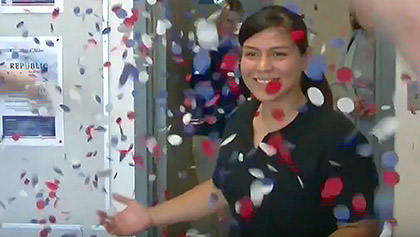CAU president ‘excited’ about rotorcraft degree program
New campus in Phoenix ideal location
California Aeronautical University President Matt Johnston said he was thrilled to add a rotorcraft emphasis degree program to the aviation mix as the aviation university founded in 2012 begins an eastward expansion to metropolitan Phoenix’s Falcon Field Airport.
“We’re excited as all get out to be adding helicopters” to the program, Johnston told AOPA during a break from preparing the campus for an incoming class of students. The year-round helicopter emphasis falls within the university’s aviation degree program and offers an alternative to fixed-wing studies. Students will earn four helicopter certificates and ratings including private pilot, instrument rating, commercial pilot, and certificated flight instructor.
University officials have had an eye on the facility in Mesa, a suburb of Phoenix, for several years. “Falcon Field is a very helicopter friendly airport,” Johnston explained. “Boeing is building the [AH-64] Apache there, MD Helicopters has a presence, and it’s just a great helicopter environment.” He said the university was fortunate to hire an “experienced lead helicopter instructor who is excited to build this program with us.”
Most students will train in a two-seat Robinson R22 that is powered by a Lycoming 0-360 four-cylinder engine but limited to a pilot and passenger payload of 389 pounds. However, there are plans to use a four-seat Robinson R44 powered by a Lycoming IO-540 six-cylinder engine with a typical payload of 818 pounds “for people built otherwise,” Johnston added.
The Arizona airport already had most of the infrastructure that rotorcraft instruction requires, including ramp circles, dedicated helicopter pads, and maintenance facilities.
Johnston said a handful of students are expected to enter the helicopter program in the fall “and we’ll go from there.”
He recalled that the initial Part 141 fixed-wing aviation class at the university’s main campus in Bakersfield, California, began with five students and predicted the same thing would occur in Phoenix.
The university’s bachelor’s degree blueprint currently includes cohorts of 50 to 60 students beginning classes every 10 weeks. Johnston pointed out that the incoming fall 2021 class at the Bakersfield campus is “shaping up to meet or exceed previous years in spite of the coronavirus pandemic.” An aviation associate degree and an aviation maintenance technology program are also offered.
“It’s cliché, but the sky is the limit,” Johnston said. “As long as we have helicopters, we’ll have students.”





